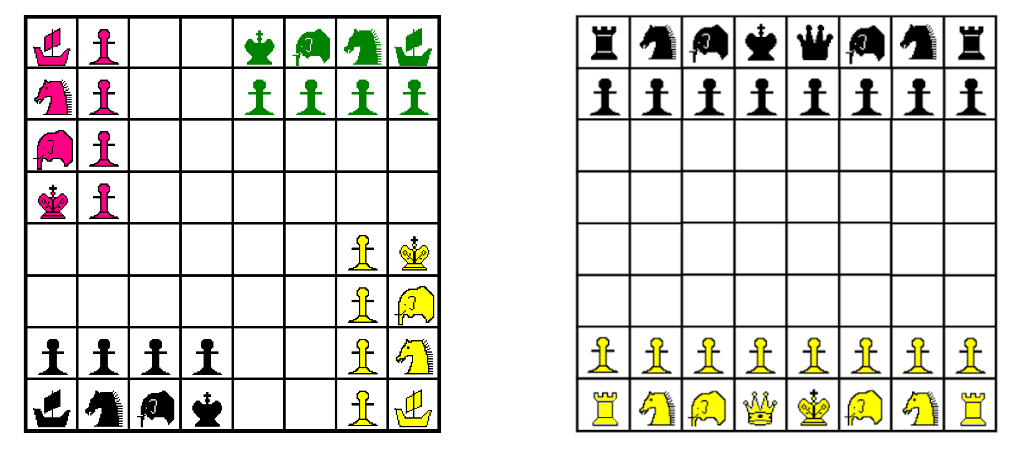 If etymology were anything to go by, checklists would rule our lives, although we must beware not to let etymology rule our views of language, informative though it can be.
If etymology were anything to go by, checklists would rule our lives, although we must beware not to let etymology rule our views of language, informative though it can be.
The IndoEuropean root KSEI meant to gain control or power over, to rule. In Sanskrit a kshatriya was a member of the military caste (rulers, warriors, and administrators), the second of the four Hindus varnas, castes or classes (literally “colours”). The others were the brahmins (priests, scholars, and teachers), vaishyas (agriculturalists and merchants), and shudras (labourers and service providers). In ancient Persia a shah was a king and a satrap a governor of a province, a satrapy. In Turkish a padishah was a lord or a sovereign such as the Ottoman Sultan; a shortened form, pasha, referred to a military commander or a provincial governor.
What resembles an early version of chess was called chaturanga, from the Sanskrit chatur, four (from the same IndoEuropean root from which we get four and farthing, tetrad and tetralogy, quart, quartan, and square) plus anga, divisions. The name denotes the four groups of men, the armies, belonging to the four players. By the 6th century another version had developed, shatranj, more like the modern version of chess. The classical Greek word for chess was ζατρίκιον (cf chatur) and although there are similarities between the two games, in the types of pieces used and the ways in which they moved, they were probably different, although various books on the history of chess give different and often confusing accounts. However, the similarity of the two names suggests a relationship of some sort, and it is possible that through folk etymology the Sanskrit chatur was confused with the Persian word for a king, shah.

If you attacked the shah in shatranj, you said so, and “shah” therefore led to our word “check”; “shah mat”, the king is defeated, gave us “checkmate”. In mediaeval Latin the game was called scacci, giving eschècs in Old French and chess in English. In modern French it is échecs, in Italian scacchi, in Spanish ajedrez, and in Portuguese xadrez. German has Schach, Dutch schaak, Danish skak, Norwegian sjakk, Swedish shcack, modern Greek σκάκι, Polish szachy, Russian shakhmaty (шахматы). Non-IndoEuropean languages conform: Finnish shakki, Hungarian sakk, Hebrew shakhmaht (שחמט). But in Erse and Cymric chess is called ficheall and gwyddbwyll, respectively, from the names of an unrelated ancient Celtic board game.
In the 12th century the word scaccarium described a table covered by a black cloth marked off in squares, used as a kind of abacus; hence exchequer. The exchequer called the counterfoil of a bill a cheque, used to check for forgeries. Checker or chequer later came to mean a chess board and therefore to mark off in squares like a chess board, checked pattern, or chequered flag.
Since to check meant to attack in chess, the word came to mean to attack in general, as in a physical body check, and therefore to stop someone or something from happening, to hold in check. You might stop someone to control or check them. In a hotel you stop to check in or out. You get checked off at a checkpoint. And whoever is doing the checking, having checked you out, may put a tick in a check box or on a checklist. Death is the final checking out.
T H Huxley, in his textbook Lessons in Elementary Physiology (6th edition), described check ligaments, passing from the apex of the odontoid peg to either side of the occipital foramen, helping to stop excessive rotation of the skull. Check ligaments are also found in the eyes.
The term checklist in English dates from the mid 19th century as “a list of names, titles, etc., so arranged as to form a ready means of reference, comparison, or verification; spec. a list of qualified voters for use at an election” (OED). There have been medical checklists for a long time—check out this paper in the Journal of Applied Psychology (1951). Then Atul Gawande, in The Checklist Manifesto: How to Get Things Right (2009), foreshadowed by a New Yorker article, and taking a lead from aviation, put checklists more firmly on the map. He and his colleagues reported that surgical safety checklists reduced mortality and other postoperative complications. The problem in adopting them in widespread practice turned out to be difficulties in implementation. A realist synthesis of the evidence showed that implementation improves when clinicians are actively engaged and tailor checklists to their own needs.
Algorithms generally work at least as well as clinical judgment, but they won’t work if they aren’t used properly.
Jeffrey Aronson is a clinical pharmacologist, working in the Centre for Evidence Based Medicine in Oxford’s Nuffield Department of Primary Care Health Sciences. He is also president emeritus of the British Pharmacological Society.
Competing interests: None declared.
